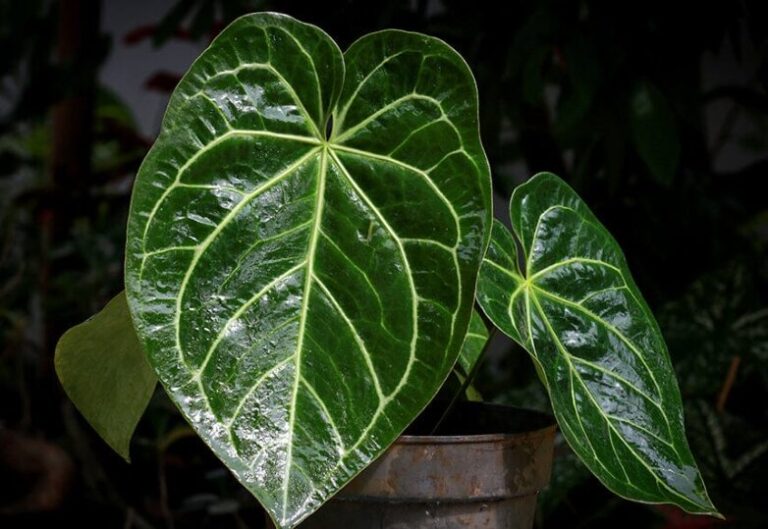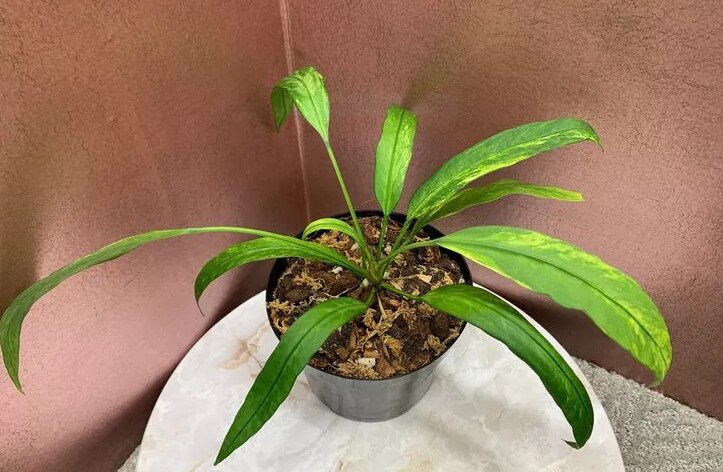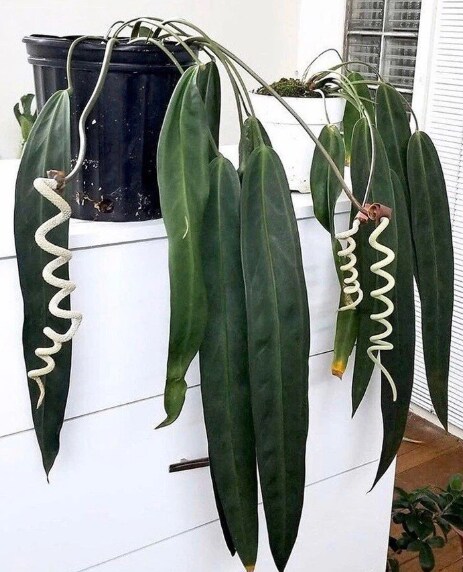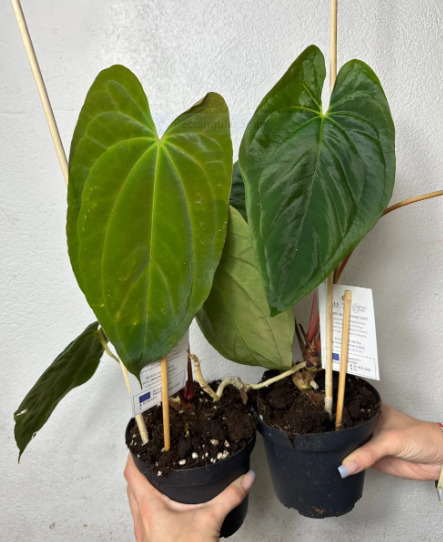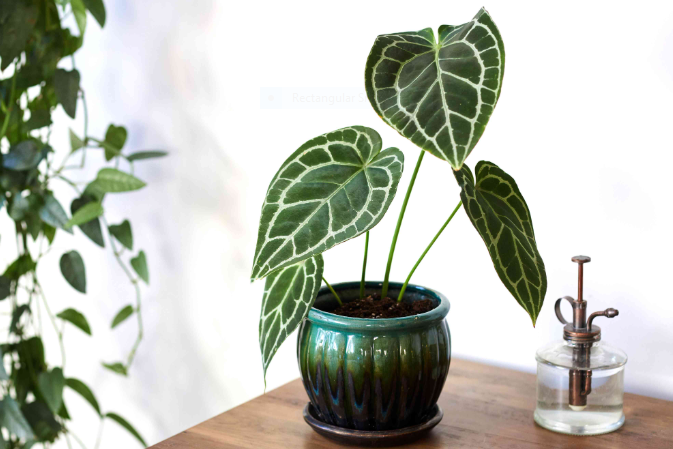Anthurium Red: Origin, Benefits, and Care Requirements
With its gorgeous glossy red foliage, elegant appearance, and surprisingly simple care, Anthurium Red is the perfect choice for plant owners to grow indoors and outdoors.
When grown indoors, the plant is very easy to care for. In this blog post, we will briefly discuss Anthurium Red, its care and growing requirements, and key benefits.
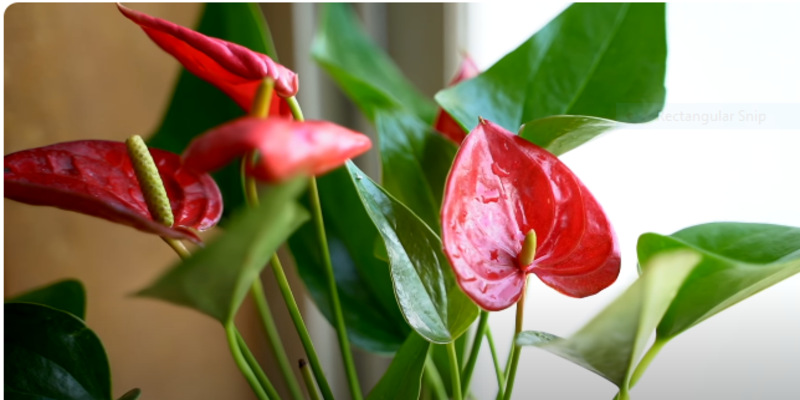
What is Anthurium Red?
Anthurium red is a tropical houseplant that is commonly known as the flamingo lily, painter’s palette, and tail flower. This low-maintenance heart-shaped red bloom can last up to 8 weeks. With little care and attention, these plants bloom crazily for more than 250 days a year. The right size and vibrant color of red anthurium also make it perfect for indoor areas.
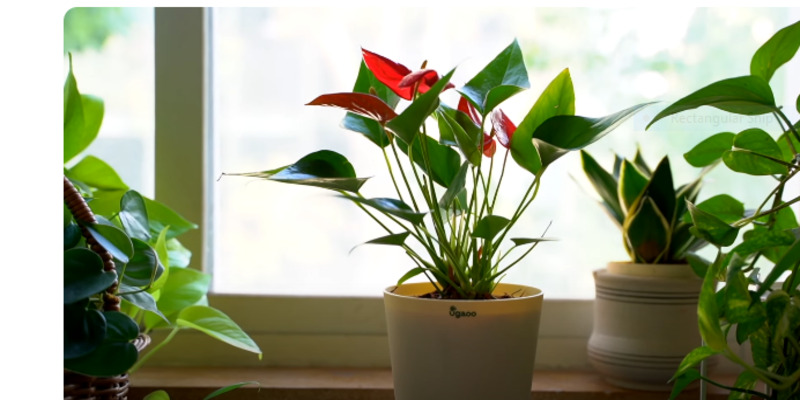
It originates from tropical areas of Central and South America. The scientific name of the anthurium red plant is anthurium and regnum.
Benefits of Growing Anthurium Red Indoors
Growing Anthurium Red in your home garden has the following benefits:
1. Air purification
Anthurium red has several benefits, making it an excellent choice for your home. It effectively removes formaldehyde and ammonia toxins, making breathing healthier and more comfortable.
This way, Anthurium Red acts as the best air purifier.
2. Aesthetic Appearance
The striking flower of the anthurium red gives classy and elegant vibes to your living area.
3. Low Maintenance
If you are giving proper care, then it is too easy for you to keep your anthurium red and happier. It does not matter whether you are a beginner or a pro; Anthurium Red is your best addition.
How to Grow and Care for Your Anthurium Red
Mimic its natural habitat by meeting the following requirements to grow and care for your Anthurium Red when grown indoors:
1. Anthurium Red Lighting Requirements
Red anthurium loves to grow under bright and indirect light, but can also manage low-light conditions. It will grow better when it gets more light. However, do not expose your plant to direct sunlight for long because it can scorch its leaves and retard its growth.
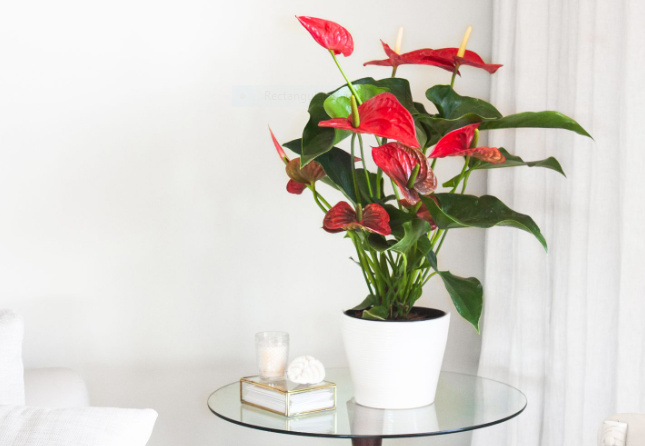
2. Anthurium Red Temperature Requirements
Red anthurium thrives in warm temperatures, so try to keep your plant in an area with an average temperature of 65-80 degrees Fahrenheit.
This plant can tolerate a little bit of cold weather. However, during winter, its growth will slow and produce fewer flowers. Use a shield to protect your plant from drafty seasons and sudden temperature changes. To make your red anthurium happiest, always keep it at an average temperature, which can maintain its beauty.
3. Anthurium Red Watering Requirements
Water your red anthurium one or two times a week. Soils dry out early in summer, so increase water frequency in summer. But remember, do not overwater your plant. It can make the soil too moist and soggy and resulting in root rot.
Ensure that your plant is watered thoroughly until liquid drains out from the bottom drainage hole of your pot. After this, you can discard the Water remaining in the saucer.
Water your plant when 50 per cent of the soil feels dry. Before watering, check the soil’s upper layer (almost two inches) with your fingers and chopsticks.
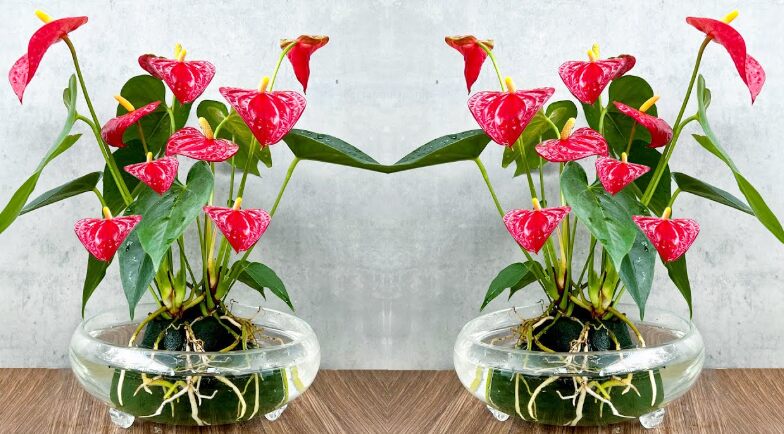
4. Anthurium Red Humidity Requirements
The gorgeous anthurium red loves to grow in high humidity. For better results, always place your placenta in a high-humidity city.
Increase humidity by using:
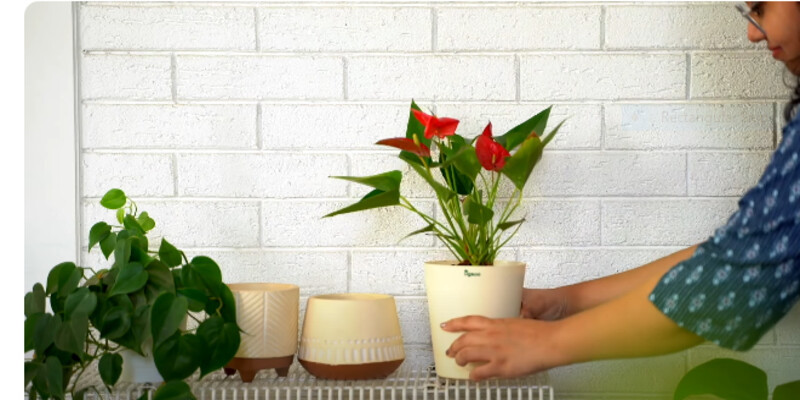
High humidity conditions make your plant happy and help it grow well.
5. Anthurium Red Soil Requirements
Anthurium Red grows well in a loose, well-draining, and organically rich potting soil. The soil which is coarse, and porous, such as sphagnum moss is ideal to grow this plant indoors.
You can also prepare your own potting mix by mixing:
Alternatively, you can mix:
6. When to Fertilize Your Anthurium Red Plant?
Anthurium red beauty is very forgiving when it comes to fertilization. Feed your plant with fertilizer every 6-8 weeks during summer and spring, which are its growth seasons. Use water-soluble or dilute fertilizer for good results.
Avoid feeding your plant during the dormant or winter season.
7. Anthurium Red Pruning Requirements
Pruning means cutting or trimming off dead parts of the plant. It encourages new flowers to bloom. If your Red Anthurium plant is not thriving or getting bushy, you can prune your plant. So, when you notice some yellow and dead leaves, cut them because these adversely affect your anthurium red.
During winter or the dormant season, give your plants a break of almost a week. During this period, please keep your plant in a more relaxed spot, reduce the amount of light, and let the soil of the red anthurium dry more. The rest period will help your plant produce more flowers during its growing season (summer and spring).
8. Anthurium Red Toxicity for Humans and Pets
Red anthurium is toxic to pets and humans due to the presence of calcium oxalate crystals in its leaves. Indigested leaves can cause throat issues.
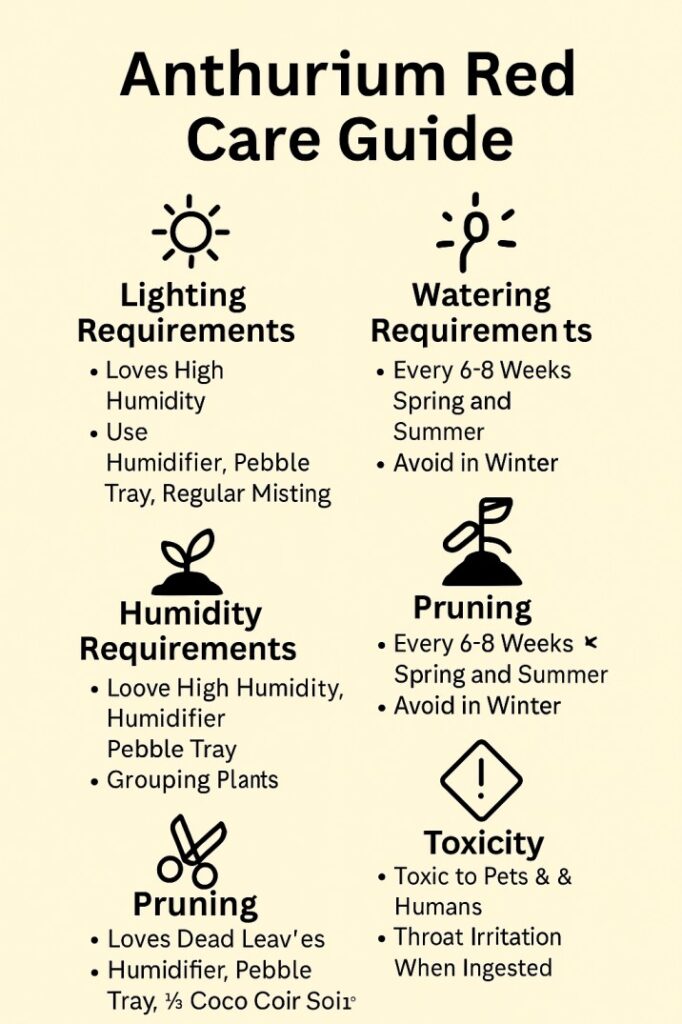
Extra Features of Anthurium Red Plant
Anthurium red is a stunning plant that can be used for decorative purposes and holds some significant importance.
1. Brings Positive Energy
According to feng shui, anthurium red brings positive energy and good vibes to any environment or space. This is why this plant is so prevalent in homes and offices.
2. Emotional Well-Being
The bright flowers of the anthurium red bring happiness and joy. This can also lift your spirit.
3. Gift of Love
Many people prefer anthurium red for heartfelt reasons. This gorgeous colour helps people convey their love and emotions to their loved ones.
FAQS About Anthurium Red Care and Growing Requirements
How big does an anthurium plant get?
Anthurium red generally reaches a height of 12-18 inches when cared for well and grown under optimal conditions.
Why do leaves of red anthurium turn yellow?
The significant reasons for yellowing leaves are overwatering, direct sunlight, and low humidity. To protect your plant, give your plant balanced watering, indirect light, and high humidity. This care helps your anthurium thrive again.
What should you do if your anthurium red has dry tips?
Excessive sunlight exposure, under- and over-watering, and insufficient humidity are the primary reasons your plant’s leaf tips get dry and crispy. Adjust the watering schedule and place your plant in an area where no pests and direct light affect its health.
Also Check What is Anthurium Papillilaminum?
Conclusion
Anthurium Red, aka Flamingo Flower, is known for its brightly colored red flowers and is easy to care for when grown indoors.
The plant thrives when you mimic its natural habitat conditions in your home garden. To keep it happy and thriving, provide it with bright indirect light, warm temperatures, regular watering, and high humidity.
Take these measures and get a thriving Red Anthurium with an aesthetic appearance!

About Author
Hi, I’m Emily Davis, a passionate tropical plant enthusiast dedicated to sharing knowledge and expertise with plant lovers. Through his blog, I will provide guides, tips, and tricks for caring for tropical houseplants species like Alocasia, Anthurium, Calathea, Philodendron, Begonia, and many more that will help readers bring a touch of paradise into their own homes. With a deep love for the vibrant colors and lush textures of tropical flora, I’m committed to inspiring others to cultivate their own tropical oasis.

